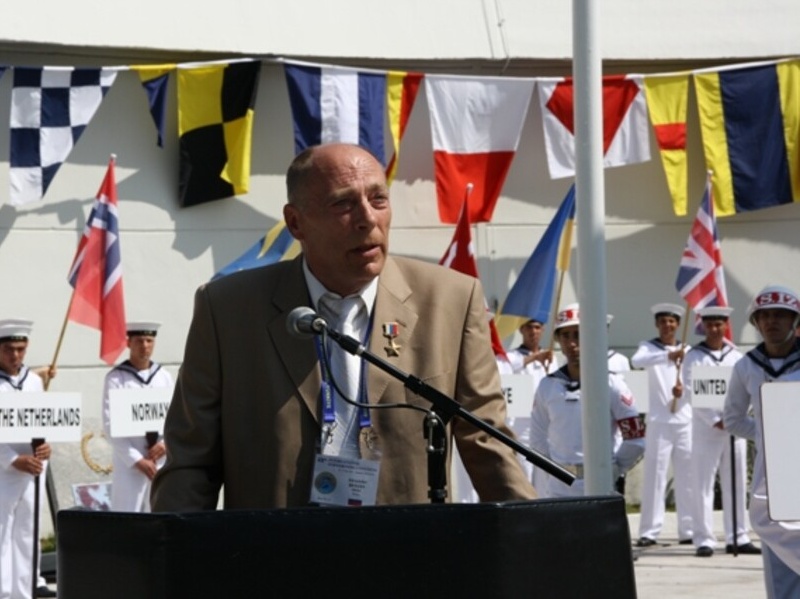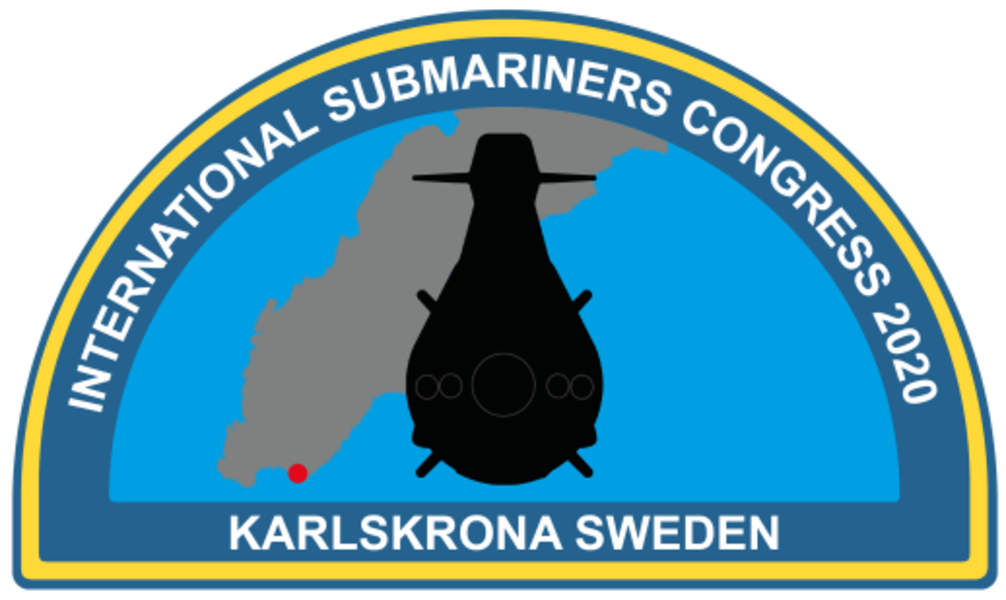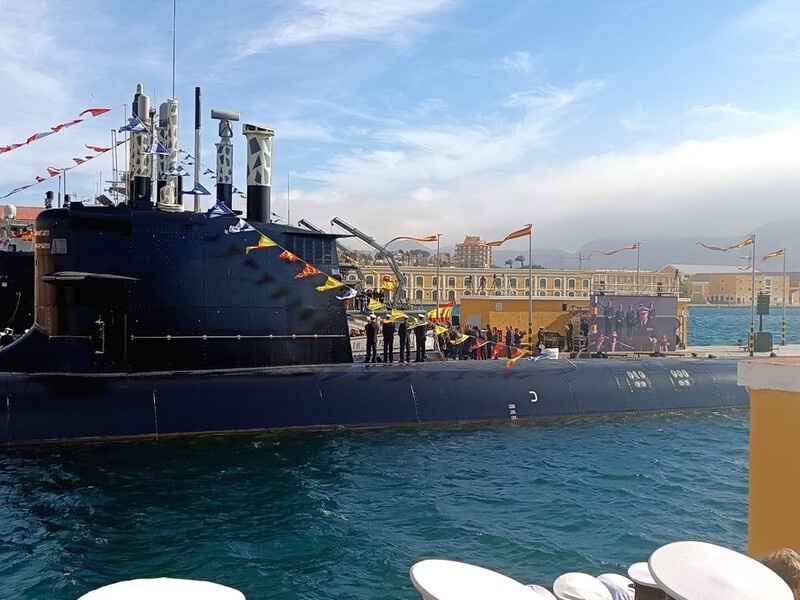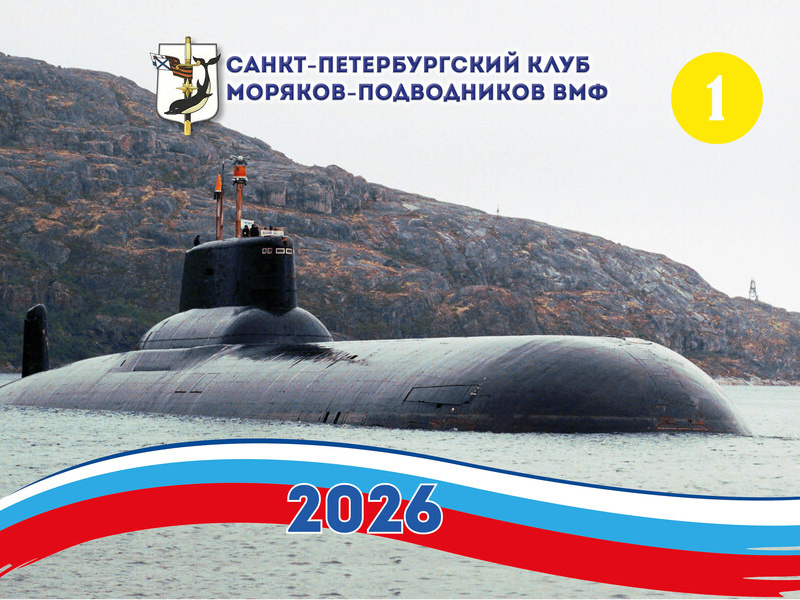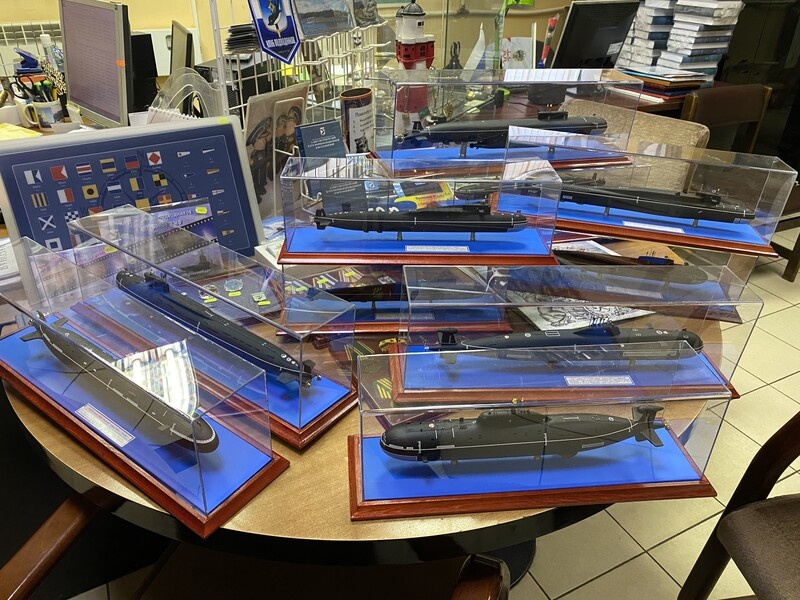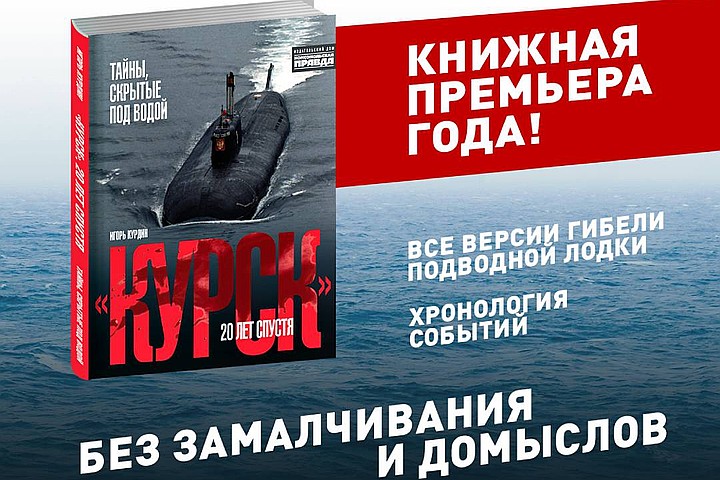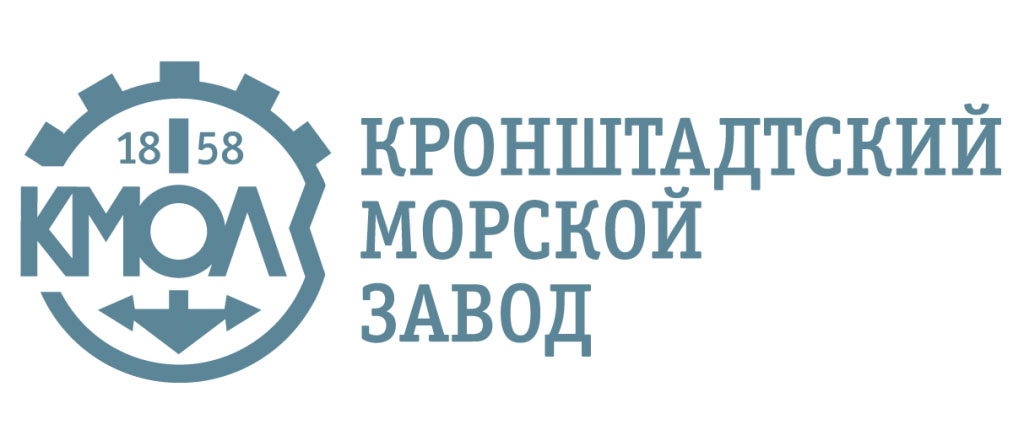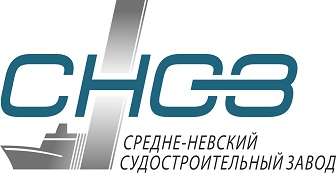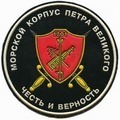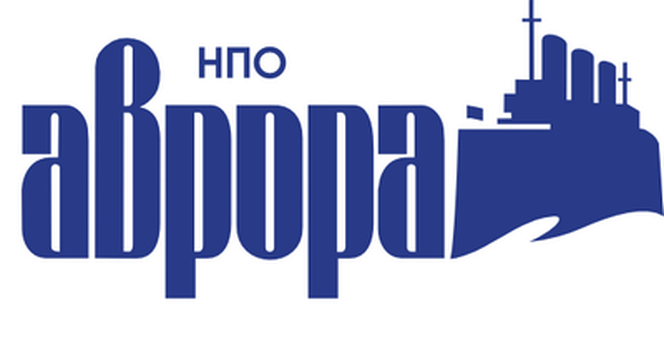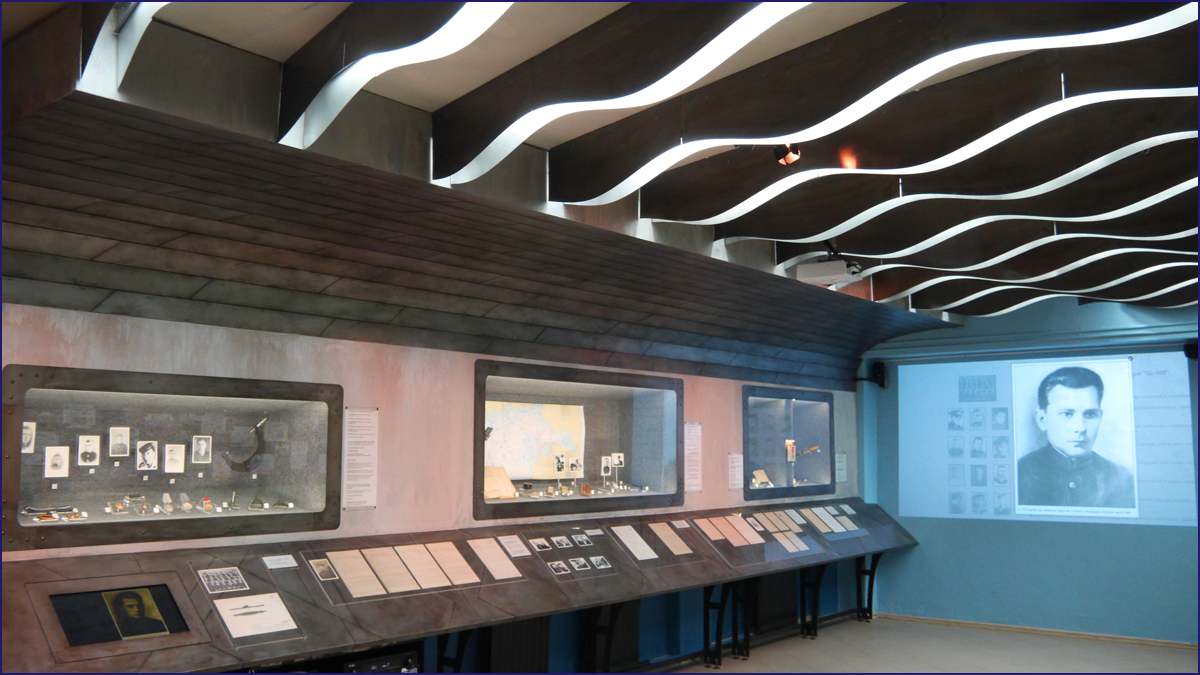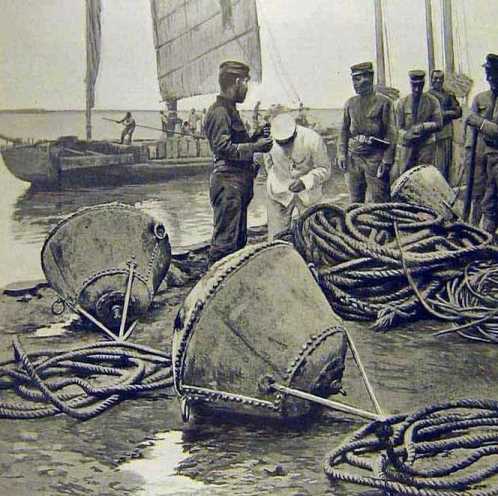Date: 26 JUN 2021
The Swedish International Convention (Congress) will meet on Sunday,22 May 2022, and end on Thursday,26 May 2022. The website for the Congress www.57isc.com
At the end of the Congress, Lars and the organizers of the conference are offering a chartered bus from Kareskovia to Copenhagen. A much better way to get to the Pier for the cruse or Copenhagen city center. The bus will make a stop at the IKEA Factory If all are interested. https://ikeamuseum.com/en/almhult/
11-Day Scandinavia & Russia (from Copenhagen) After the Congress
Roundtrip from Copenhagen, Denmark
Enchanted Princess Tour of the ship: Enchanted Princess℠ | Cruise Ships - Princess Cruises
Thu,26 May 2022 to 06 Jun 2022. Ship leaves at 1800
Interior
from $1,959*
*Pricing is per person, double occupancy; USD.
Mention while you are booking, you are traveling with the ISAUSA group for some extra goodies. Our cruise planer at Princess is.
My name is Catherine Campbell, and I am a Cruise Vacation Planner for Princess Cruises. I am working with Bud Cunnally and the ISAUSA to plan their cruise vacation, and I'd love the opportunity to do the same for you!
Princess is an award-winning cruise line that sails to unforgettable destinations around the world. Our guests enjoy enriching activities, world-class entertainment, gourmet cuisine, and so much more while immersing themselves in diverse regions and cultures. I am a Princess Expert that books hundreds of guests every year. Here are some of the reasons working with me will make your experience easy and enjoyable:
- I’m your one point of contact
- I’ll find the best promotion for you
- We’ll secure the perfect cabin together
- I’ll coordinate transportation and flights
- I specialize in groups, events, and special occasions
I look forward to personalizing my service for a seamless reservation experience. Please contact me directly to start planning your vacation at 1-800-901-1172 ext. 21407, or you may also e-mail me with the below information:
- First and last name (required)
- E-mail (required)
- Phone (required)
- Address (optional)
I look forward to speaking with you soon!
|
|
|
Cruise Details for 11-Day Scandinavia & Russia (from Copenhagen)
ItineraryShore ExcursionsOnboard ExperienceStateroom TypesFlight Quotes
11 Days | 6 Ports
Map illustration may contain port order and/or port substitutions, please review itinerary listing for actual list of ports. Port arrival and departure times are approximate and subject to change without notice. For more information please review the Passage Contract.
|
Date |
Port |
Arrive |
Depart |
|
Thu,26 May |
Copenhagen, DenmarkView excursionsin Copenhagen, Denmark on Thu, 26 May |
06:00 pm |
|
|
Fri,27 May |
Oslo, NorwayView excursionsin Oslo, Norway on Fri, 27 May |
10:00 am |
11:00 pm |
|
Sat,28 May |
|||
|
Sun,29 May |
Berlin (Warnemunde), GermanyView excursionsin Berlin (Warnemunde), Germany on Sun, 29 May |
07:00 am |
09:00 pm |
|
Mon,30 May |
|||
|
Tue,31 May |
Tallinn, EstoniaView excursionsin Tallinn, Estonia on Tue, 31 May |
08:00 am |
05:00 pm |
|
Wed, 1 Jun |
St. Petersburg, RussiaView excursionsin St. Petersburg, Russia on Wed, 1 Jun |
06:30 am |
|
|
Thu, 2 Jun |
St. Petersburg, RussiaView excursionsin St. Petersburg, Russia on Thu, 2 Jun |
06:00 pm |
|
|
Fri, 3 Jun |
Helsinki, FinlandView excursionsin Helsinki, Finland on Fri, 3 Jun |
07:00 am |
04:00 pm |
|
Sat, 4 Jun |
Stockholm (Nynashamn), SwedenView excursionsin Stockholm (Nynashamn), Sweden on Sat, 4 Jun |
07:00 am |
07:00 pm |
|
Sun, 5 Jun |
|||
|
Mon, 6 Jun |
Copenhagen, DenmarkView excursionsin Copenhagen, Denmark on Mon, 6 Jun |
06:00 am |
*Please note that prices are listed per person, non-air cruise-only and based on double occupancy. Third and Fourth guest fares apply to the 3rd and 4th guests booked in the same stateroom as the First and Second guests. Launch Fares are offering fares and may not have been in effect for the past 90 days or resulted in actual sales in all categories. Intermediate discounts may have been taken and fares may remain at discounted levels after this promotion. Taxes, Fees & Port Expenses are subject to change and Princess reserves the right to collect any increases in effect at the time of sailing even if the fare has already been paid in full. Prices are subject to change based on availability. Stateroom views are considered unobstructed unless noted otherwise. Photos, floor plan diagrams, and amenities represent typical arrangements and may vary by ship and stateroom. Actual stateroom may not be furnished as shown. Certain staterooms may vary in size, decor and configuration. Please note, accessible mini-suites have accessible showers only/no tub. Obstructions do not include certain nautical items like handrails, dividers or ship hardware. For balcony staterooms, the view is determined from the perspective of the balcony railing. Prices shown in USD. Please review Passage Contract for Cancellation Policy.
At the USSVI Convention, ROSEN creek Orlando: USSVI Has a room scheduled for ISA/USA on Wednesday, 1 Sept 2021, from 1300-1430 for an ISA/USA meeting. We will be in Room Wekiwa 7.
A question for all of the United States Members? Would you be interested in Holding an ISA/USA convention In John P. Hollands' native country? Ireland does not have any Submarines. However, they do have a Navy. The other members of the ISA are finding it difficult to travel to the USA. There is a museum in his village in County Clare, Republic of Ireland. Our proposed Convention would begin in Dublin for two nights. Then we would tour to the West of Ireland, enjoying the beautiful Wild Atlantic coast, stopping at JP Hollands museum, spending two days in the west of Ireland, leaving from the Dublin or Shanon airports. Or you could stay and enjoy my beautiful second Country.
Send me an E-mail. This is subject to the other 28 members of the International approving this future Congress, including the BOD of the ISA/USA.
Welcome our newest ISA/USA Member, Bret Zacher, who lives with his wife Amy in Long Grove, IL. FTB2 (SS) Zacher served on bord the BOOMER USS Sam Rayburn SSBN 635 Gold crew.
US Navy facing early challenges in modernizing dry docks for submarine maintenance
By: Megan Eckstein 17 hours ago
8
Maine's Portsmouth Naval Shipyard (Navy)
WASHINGTON – One of the U.S. Navy’s first major projects under a 20-year shipyard modernization effort is facing cost overruns and schedule slips, an unexpected circumstance which the Navy is hoping to learn from as it continues through the $20-billion Shipyard Infrastructure Optimization Program.
Though the Navy is predominately in a planning phase of the program, generating computer models of its four public shipyards and simulating what various layouts and improvements might do for productivity, some recapitalization work is already beginning. A new multi-mission dry dock at the Portsmouth Naval Shipyard in Maine will be among the first new construction projects as part of the program. The plan calls for taking the four yards – the oldest being 254 years old – and converting them into modern, efficient facilities to repair the Navy’s newest and most prominent platforms.
The dry dock at Portsmouth is essential because it will enable the submarine-only repair yard to perform work on the Virginia-class attack submarine, which it can’t do with its current dry docks.
Chief of Naval Operations Adm. Mike Gilday confirmed today that the effort had hit a snag, partly because of the COVID-19 pandemic and partly because the Navy underestimated the complexity of the project.
“We saw significant growth in cost for lumber, for cement, and steel, and that’s been pretty steady through the pandemic, although it’s beginning to level off now. I think construction companies have had the same challenges. The initial estimate was done two years ago, and so that was a factor,” he told Sen. Jeanne Shaheen, D-N.H., during a 22 Jun Senate Armed Services Committee hearing.
“More importantly was the complexity of that work,” he said. “We are now bringing in the industry before we make the [cost] estimates so that we have a better-informed idea of the complexity of the job. As an example, at Portsmouth, it makes more sense for the contractor to do the foundational work concerning the fabrication and then to ship it down to the site, rather than to do it in the shipyard.”
The Navy asked for $225 million in its fiscal 2022 unfunded priorities list – a set of spending items that are important to the service but were not included in the Pentagon- and White House-approved budget request to Congress – to support the Portsmouth dry dock and keeping the project on schedule.
“It is my number one unfunded on the list,” Gilday said.
Sign up to get The Drift
Sign up for our weekly newsletter to go deeper into all things Navy with David Larter.
Subscribe
Top of Form
Bottom of Form
The unfunded priorities list said the project would support Los Angeles-class and Virginia-class subs, allowing as many as three boats to be docked out of the water at once.
“Bids for this project were received in March 2021, and contractor proposals exceeded programmed funding. Based on the submitted schedule and cost projections, an additional $225M in funding keeps the project on schedule and ensures work continues during the second year of construction,” the document adds.
During a separate 9 Jun hearing in the House Armed Services Readiness Subcommittee, Vice Chief of Naval Operations Adm. Bill Lescher told lawmakers that only one bid was received.
“We also saw that we didn’t have the competition that we would have expected. And it’s a well-proven unhappy fact when you come down to a single bidder for these types of projects, and there’s a price premium,” he said. “So I’ve asked our Naval Facilities team to take a very hard look at that, this being a learning organization. This project is still in negotiation, but then we have to bring that insight into what that means for our five-year plan as well and adjust and adapt.”
During her exchange with Gilday, Shaheen noted that the first Virginia-class submarine maintenance availability at Portsmouth was scheduled for 2026; Gilday confirmed that and added, “I am committed to keeping that project on track. For that very reason.”
Sen. Mazie Hirono, D-Hawaii, asked about the project during the hearing as well. The Pearl Harbor Naval Shipyard and Intermediate Maintenance Facility is expected to begin work on a similar multi-mission dry dock in FY23, and she wanted to know how the Navy would avoid the same challenges from Maine.
That shipyard “is at the top of our priority list as we go into the FY23 budget build for [military construction],” Gilday told her. “We’re about to have a conference with industry out in Hawaii early next month to get a better understanding of the scope, the estimate, and we think right now that that project is probably in the six to seven-year timeframe based on the phasing, but we would like to get rolling as soon as possible in that effort.”
Lescher, in his HASC hearing, said the FY22 budget request includes $830 million for the optimization program, with some money going to planning but with the bulk of the funding going to two dry docks: the one in Portsmouth and another at Norfolk Naval Shipyard in Virginia. He said six dry dock projects would begin work in the next five years, with total investments over $4 billion.
Russia’s Gigantic Submarine, Belgorod, Sails For The First Time
Click to enlarge. The Project 09853 Class submarine, Belgorod (NATO: OSCAR-II-STRETCH) will provide new capabilities to the Russian Navy.
Russia’s Gigantic Submarine, Belgorod, Sails For The First Time
Belgorod will bring new capabilities to the Russian Navy. To be operated on behalf of the secretive Main Directorate of Undersea Research (GUGI), the submarine may be central to Russia's intelligence-gathering capabilities. Yet, she also carries a new strategic weapon, known as Poseidon.
H I Sutton 25 Jun 2021
The Russian Navy’s latest ‘Special Mission’ submarine, K-329 Belgorod, has put to sea for the first time. Open source intelligence seen by Naval News indicates that the submarine left Severodvinsk on 25 Jun 2021. This represents the start of sea trials which are critical to the delivery of the new boat to the Russian Navy.
Although detailed specifications have not been revealed, it is clear that Belgorod is the largest submarine to be built for 30 years. In fact the only submarine type which is larger is the Typhoon Class. Her enlarged Oscar-II class submarine hull is estimated to be 178 meters (584 feet) long and about 15 meters (49 feet) across. Her displacement will likely be significantly more than the ~19,000 tons of the Oscar-II class on which she is based. This is bigger in every respect than the largest Western submarine, the U.S. Navy’s Ohio Class.
The submarine was launched in 23 Apr 2019 in Severodvinsk. Since then it has been moored to the quay there being fitted out and system tested. Russian media has reported tests of the new weapon system and also of the reactors. She had been expected to start trials in April, after the arctic ice had receded, but instead was taken back into the sheds. She remerged at the end of May and was identified undergoing degaussing on June 5 – 6. She has now finally sailed.
The ship left its berth for the first time on 25 Apr. But instead of heading directly out to sea she was loaded into the floating dock and transferred back to the construction hall where she was built. By 7 May when another new submarine, Kazan, was being commissioned, preparations to bring her back out were visible.
Two Roles In One Submarine
Belgorod it’s intended purpose presents Western analysts with an enigma. She will combine two seemingly contradictory roles. The first is as a host submarine (read ‘mothership’) for deep diving nuclear powered midget submarines. These are capable of working on cables and other objects on the sea floor. The concern in NATO is that these could include the undersea internet cables connecting Western countries. This is termed a ‘special mission’ in navy parlance (which is full of euphemisms for covert activities).
The second role is one of nuclear strike and deterrence. For this she will be armed with six ‘2м39′ Poseidon torpedoes. These are a whole new category of weapon not fielded by any another navy. They have been described as ‘Intercontinental Nuclear-Powered Nuclear-Armed Autonomous Torpedoes’. At over 20 meters (I feet) long they are in effect they are giant underwater drones with practically unlimited range and a nuclear warhead. And their expected performance (around 70 knots and 1,000 meters depth) mean that they cannot be countered with existing weapons.
These two roles are seen as contradictory because performing one may compromise the other. The nuclear deterrence role requires remaining hidden and and out of harms’ way. While the ‘special mission’ may take her into potential harms way. And which role will be the primary one is also unclear.
For the Special Mission role, Belgorod is intended to host the Project 10831 Losharik submarine (AS-31). This suffered a serious accident on 1 Jul 2019 however, just two months after Belgorod’s launch. A fire in the battery compartment killed 14 ‘hydronauts’ (the Russian term for the elite submarine crews who drive these deep-diving subs). Losharik is still undergoing repairs which may still take years to complete.
Possibly to mitigate the delays in returning Losharik to service, there have been reports that another deep-diving midget submarine is being adapted to fit Belgorod. AS-15 is a Project 1910 Kashalot class submarine (known as the Uniform class by NATO). She was laid down in 1983 and launched 30 years ago in 1991. But despite her age the titanium hull is likely to be in good condition so the idea of upgrading her is not far-fetched. But the Uniform class was never intended to be carried under a host submarine so the modifications would have to be very extensive. At this point these reports are unconfirmed and should be treated with caution.
The Poseidon weapon will also take a few years to be deployed, so it may take Belgorod several more years before she is truly operational. Recent Russian media reports suggested that the submarine will serve in the Pacific, as opposed to the Arctic-based Northern Fleet. This seems counterintuitive as it would stretch the logistics for the deep-diving submersibles which are based in the Northern Fleet. All the same, she is a unique and impressive submarine which analysts will be following closely.
Report on Virginia-class Attack Submarine Program
24 Jun, 2021 10:30 AM
The following is the 24 Jun, 2020 Congressional Research Service report, Navy Virginia (SSN-774) Class Attack Submarine Procurement: Background and Issues for Congress.
From the report
The Navy has been procuring Virginia (SSN-774) class nuclear-powered attack submarines (SSNs) since FY1998, and a total of 34 have been procured through FY2021. Since FY2011, Virginia-class boats have been procured at a rate of two per year. Virginia-class boats scheduled for procurement in FY2019-FY2023 are being procured under a multiyear procurement (MYP) contract. Most Virginia-class boats procured in FY2019 and subsequent years are to be built with the Virginia Payload Module (VPM), an additional, 84-foot-long, mid-body section equipped with four large-diameter, vertical launch tubes for storing and launching additional Tomahawk missiles or other payloads. When procured at a rate of two boats per year, VPM-equipped Virginia-class SSNs have an estimated procurement cost of about $3.45 billion per boat.
The Navy’s proposed budget requests the procurement of the 35th and 36th Virginia-class boats. The two boats have an estimated combined procurement cost of $6,915.8 million (i.e., about $6.9 billion). The two boats have received $1,888.3 million in prior-year “regular” advance procurement (AP) funding, and $778.2 million in Economic Order Quantity (EOQ) funding, which is an additional kind of AP funding that can occur under an MYP contract. The Navy’s proposed FY2022 budget requests the remaining $4,249.2 million needed to complete the two boats’ estimated combined procurement cost of $6,915.8 million. The Navy’s proposed FY2022 budget also requests $2,120.4 million in AP funding for Virginia-class boats to be procured in one or more future fiscal years, bringing the total amount of procurement and AP funding requested for the Virginia-class program to $6,369.6 million (i.e., about $6.4 billion).
A key issue for Congress concerns the SSN force-level goal and procurement rate. The Navy’s current force-level goal, which was released in December 2016, calls for achieving a maintaining a fleet of 355 manned ships, including 66 SSNs. On 9 Dec, 2020, the Navy released a long-range Navy shipbuilding document that called for a Navy with 382 to 446 manned ships, including 72 to 78 SSNs, plus additional large surface and underwater unmanned vehicles (UVs). On 17 Jun, 2021, the Navy released a long-range Navy shipbuilding document that calls for a Navy with 321 to 372 manned ships, including 66 to 72 SSNs, plus additional large surface and underwater UVs.
Under the Navy’s FY2020 30-year (FY2020-FY2049) shipbuilding plan, SSNs would be procured at a steady rate of two per year. Under the 9 Dec, 2020, document, SSNs would be procured at a rate of three boats per year during the period FY2035-FY2041 and two and two-thirds boats per year (in annual quantities of 2-3-3) during the period FY2042-FY2050. The 17 Jun, 2021, document suggests that the SSN procurement would eventually be increased to something more than two boats per year. In assessing the future SSN force-level goal and procurement rate, factors that Congress may consider include but are not necessarily limited to the following:
- U.S. national security strategy and national defense strategy and the contributions that SSNs make to fulfilling those strategies;
- the funding that would be needed each year to procure SSNs and operate and support the SSN force and the potential impact of SSN-related funding requirements, given potential future U.S. defense levels, on funding available for other Navy or Department of Defense (DOD) programs; and
- the capacity of the submarine construction industrial base to take on additional work that would be generated by procuring an average of more than two SSNs per year.
Download the document here.
The US Navy says parts on its Virginia-class attack submarines are breaking sooner than expected
rpickrell@businessinsider.com (Ryan Pickrell) 24 mins ago
©
- US Navy The Navy has a problem with some of its Virginia-class fast-attack submarines, specifically that some parts are failing sooner than expected. US Navy
- The US Navy has a parts problem with some of its Virginia-class submarines.
- Some parts "are failing more quickly than we originally envisioned," the acting Navy secretary said.
- His comments follow a report revealing the Navy has cannibalized hundreds of subs for working parts.
- See more stories on Insider's business page.
US Navy leaders acknowledged a problem with the service's Virginia-class fast-attack submarines on Tuesday, telling lawmakers that parts are failing much sooner than expected.
"The Navy is aware there are some challenges with some of the Virginia-class supply chains," acting Secretary of the Navy Thomas Harker told the Senate Armed Services Committee.
"There are parts on the Virginia class that we thought were going to be life-of-the-submarine parts, and they are failing more quickly than we originally envisioned," Harker said, adding that the service's sub crews and parts support are having to go back in and find replacement parts.
Questions about the parts problem follows a report from Bloomberg on how that spare parts problem is crippling the $166 billion fleet of four dozen nuclear-powered Virginia-class submarines.
The report cited a Congressional Budget Office report noting "significant delays" in submarine maintenance at Navy shipyards, as well as difficulties securing necessary parts.
The CBO said that in situations where parts are not readily available, a shipyard may choose to "cannibalize," or borrow, parts from another submarine, typically one that has just entered the shipyard for maintenance.
Between 2013 and 2019, the number of submarine parts the Navy had to swap out jumped from around 100 to 450, though the number has since started to decline. In total, the service has had to swap over 1,600 parts since 2013, Bloomberg reported.
Asked Tuesday why some parts on the Virginia-class submarines are failing sooner than expected, Harker responded, "I'll have to get back to you on that."
In a statement to Bloomberg, the Navy said that engineering analysis and testing indicated that parts on the submarines that first entered service in 2004 would last several decades.
But, the service said, unexpected "degradation," like "corrosion caused by complex galvanic interactions," has caused some parts to break sooner than anticipated.
Naval Sea Systems Command said that the design of the Virginia-class submarines was "revolutionary and forward-thinking," even if some parts "have failed sooner than expected." The command explained that the procurement approach offers the Navy the ability "to make reliability improvements in later blocks."
Most, around 70%, of the submarine spare parts problems were in the first two blocks, or development models, that were first delivered to the Navy in 2004 and 2008.
The naval command, which oversees naval maintenance activity, told Bloomberg that it is "not satisfied with any material cannibalization that limits our submarine fleet's ability to respond to national tasking and is taking all steps necessary to avoid these scenarios."
The Department of the Navy's fiscal year 2022 budget proposal requests funds for two new Block V Virginia-class submarines. It is unclear if the parts problems that affected earlier designs will affect the newer models.
The Navy's Virginia-class submarines are stealthy underwater warfighting platforms armed with torpedoes for anti-submarine and anti-ship combat, as well as cruise missiles for strikes on land-based targets. The submarines are also equipped with high-end sensors for intelligence, reconnaissance, and surveillance missions.
South Korea’s KSS-III Batch 2 Submarine To Feature Both AIP And Li-Ion Batteries
3,000 tons KSS III submarine ‘Dosan Ahn Chang-ho’ during its seat trials. ROK Navy picture.
Hyundai Heavy Industries (HHI) is currently building the third submarine of the KSS-III Batch 2 project in partnership with Daewoo Shipbuilding Maritime Engineering (DSME) Naval News learned at MADEX 2021 in Busan, South Korea.
Daehan Lee 18 Jun 2021
Daehan Lee story with additional reporting by Xavier Vavasseur
Submerged speed and snorkel speed can reportedly reach 20 knots and 12 knots respectively, and Batch-1 submarines have six Vertical Launching System (VLS) cells for submarine-launched ballistic missiles (SLBM) and six torpedoes, an engineer from HHI explained. He told Naval News that Batch-1 adopted air-independent propulsion (AIP) system, also mentioning that designs of the three Batch-1 submarines by HHI and DSME are identical.
We learned during an interview with HHI at MADEX 2021 on 10 Jun, 2021, that the three submarines have been built by both shipbuilding companies in turn. DSME was in charge of the detailed design of the class and construction of the first and second submarines. The engineer confirmed that the second one from DSME was launched in November 2020, and it will be delivered to the Republic of Korea Navy (ROKN) by 2022.
The third and final submarine of the first batch is still under construction at the HHI shipyard in Ulsan. Steel cutting took place in 2017, keel laying on 11 Apr 2019. The launch is expected to take place by year-end. Meanwhile, the first submarine of the class, ROKS Dosan Ahn Chang-ho, continues sea trials.
The launching ceremony for the 2nd KSS III submarine was held at Geoje Daewoo Shipbuilding & Marine Engineering Okpo Shipyard. ROK Navy picture.
When the engineer was asked about the next-generation submarines, also known as Batch-2 and Batch-3, he rejected to comment on further technical improvement and the possibility of loading SLBMs, by flatly observing that “nothing has been decided“. Korean defense journalist Yong-won Yoo of the well-known Korean daily media, Chosun Ilbo, previously reported that Korean SLBMs will be based on Hyunmoo-2B ballistic missiles (500 km range). According to the same source, KSS-III Batch-1 Dosan Ahn Changho-class submarines will have 6 VLS, while Batch-2 and Batch-3 submarines will feature 10 VLS. He also quoted a military source who said:
“A submerged launch test will be conducted in 2021 [from Dosan Ahn Changho] and the specific date for it remains undecided, but the day after North Korea launches its SLBM would be highly likely”.
Avoiding any confirmation about project details, HHI stressed, information about surface ships tend to be more public. We are very cautious when it comes to secret projects like next-generation submarines and believe that it is strategically appropriate not to disclose facts about military possessions or development. Shipbuilding companies’ manpower related to submarine planning and construction are separately classified and managed. They are very reluctant to openly discuss ongoing submarine acquisitions even among employees, except with those in charge”. Nonetheless, an HHI booth guide tipped off to Naval News that other propulsion systems and tonnage increase might be considered in next Batches, showing hope that the next acquisition priority after CVX (light aircraft carriers) would be submarines due to its importance.
AIP system and Li-Ion batteries
KSS III Batch 2 model showcased at MADEX 2019
In 2019, the Defense Acquisition Program Administration (DAPA) decided to choose Hanwha Defense as a supplier of lithium-ion batteries for KSS-III Batch-2 submarines. During an interview with the Chief Research Engineer of Hanwha Defense, Moon-hee Jang, at MADEX 2021, he confirmed the project was on schedule and that the company will start test readiness review of lithium-ion battery this month, preparing for land-based tests by 2022. He indicated that it will be installed on the first submarine of KSS III Batch-2 in 2027.
Hanwha Defense Li Ion battery display at MADEX 2021
Jang emphasized significantly improved energy efficiency that will come from the battery’s longer life cycle, by quoting a graph showing that lithium-ion will last 300% longer in full speed, and 160% longer in a cruising mode.
“Batch-2 submarines will have both AIP propulsion systems and lithium-ion batteries, which will increase the submerged endurance to more than 20 days at sea.”
Moon-hee Jang, Hanwha Defense
Charging cycle is secret and the ROKN has not given any information about it.
According to him, lithium-ion battery passed rigorous tests under extreme conditions of fire, saltwater, short circuit, shock, and heat. Hanwha also cooperated with KERI (Korea Electrotechnology Research Institute), ADD (Agency for Defense Development), and DTaQ (Defense Acquisition Technology and Quality) to analyze fire accident datum and reflected research outcomes in planning the battery.
Chief Research Engineer Jang concluded his remark showing pride:
“Stability and reliability are our main interests. We can confidently say that it will be the safest battery in the world, which is expected to be the world’s second deployment after Japan. Hanwha has expanded to commercial sectors by applying this advanced technology and acquiring price competitiveness. We already won four contracts from the Korean government”.
The lithium-ion battery system for the KSS III Batch-2 submarines is composed of the following:
· 24 cells per tray
· 8 trays per modules
· X (undisclosed number of) modules per strings
· X (undisclosed number of) strings
· The strings are split in two battery groups: About 100 strings located forward and another 100 strings placed aft, at the bottom of the submarine hull.
Cells come from Samsung SDI and are based on COTS (commercial-off-the-shelf) technology, similar to cell phone batteries. As the Chief Research Engineer explained, this solution is likely to be more affordable compared to those of competitors, Japan and Europe.
TAGS DSME HHI KSS-III Li-ion battery
Canada’s HMCS Corner Brook sub returns to the water
14 Jun, 2021, by Naida Hakirevic
Royal Canadian Navy’s Victoria-class submarine HMCS Corner Brook (SSK 878) is returning to the sea after a decade.
On 13 Jun, the 1991-launched submarine was transported by a lift barge from the Esquimalt Graving Dock (EGD) to Ogden Point for the final stage of the undocking process.
After having completed its Extended Docking Work Period (EDWP) at EGD in the care and custody of Babcock Canada HMCS Corner Brook began the undocking process on 10 Jun June.
Puchased by Canada from the UK back in 1998 together with its three sister units, the former Upholder-class submarine was renamed from HMS Ursula and deployed on the East Coast.
It underwent significant repair and refit work and will now carry out extensive sea trials.
The submarine has had 47 equipment upgrades including a new communication mast to allow high-speed and highly-secure satellite communications and equipment to allow it to fire modernized torpedoes, Public affairs officer Capt. Chelsea Dubeau was cited by Times Colonist as saying.
SSK 878 is expected to become fully operational in 2022.
The Navy Concluded Transmedium Flying Submersibles Were Possible A Decade Ago
A vehicle that can travel under the sea and in the air may seem like a fantasy, but the Navy says it is possible and relevant for special operations.
BY BRETT TINGLEY 11 JUN, 2021
DTIC/ONR/PUBLIC DOMAIN
SHARE
A U.S. Navy research document from 2010 outlines the Naval Surface Warfare Center (NSWC) Carderock Division's efforts to create a working design of a manned vehicle capable of both airborne flight and submerged travel. The craft was intended to provide stealthy transport for Special Forces units into and out of operating areas. This wasn't the first study of its kind to propose such a "trans medium" vehicle, defined as one capable of operating in multiple domains, such as in the air and underwater, but building such a craft has proven itself time and time again to be difficult, to say the least. It's not clear how far the Navy's efforts went, but the document's conclusions are significant in that they show that over a decade ago, Naval researchers concluded that a "working design is feasible within the current state of the art."
Aircraft that could also operate under the sea have long been pursued by the U.S. Navy and other militaries. A number of often unworkable or heavily compromised designs have been proposed and even tested by armed forces around the world since at least the 1950s, including various forms of submersible aircraft, to more modern designs like the short-lived Lockheed Martin Cormorant. While the degree to which these designs have been able to operate in both the sea and air environments vary greatly, among the "holy grails" of aerospace research is a truly hybrid vehicle, a submersible aircraft or "flying submarine" that can travel near-seamlessly between the sky and the sea.
USN
In 2010, NSWC Carderock published its study of just such a vehicle concept. The idea was to research the feasibility of designing a vehicle that combined "the speed and range of an airborne platform with the stealth of an underwater vehicle by developing a vessel that can both fly and submerge." The ultimate goal was to work towards developing a vehicle that could insert and extract Special Forces units at much greater ranges and speeds than existing platforms at the time, and be able to do so in locations that were "not previously accessible without direct support from additional military assets." There have been far less ambitious boat-submarine concepts brought to life as of late, that try to address the issues of getting around the inherent limitations of existing swimmer delivery options. But the technological chasm between creating a vehicle that can transition between the surface and subsurface of the ocean and creating a true flying submarine is absolutely massive.
The study was born out of a Broad Area Announcement (BAA) issued by DARPA in 2008 calling for design proposals for such a Special Forces vehicle and defining a Concept of Operations (CONOP) for potential designs. NSWC Carderock based its study off of that CONOP, which outlined the need for a vehicle whose capabilities included:
- Deployment from a naval/auxiliary platform;
- take-off from the water surface and transit 400 miles airborne, then land on the water surface;
- submerge and transit 12 [nautical miles] underwater before deploying Special Forces;
- loiter for up to 72 hours fully submerged;
- retrieve Special Forces whilst submerged before transiting submerged to 12 [nautical miles] off the coast, take-off and return 400 miles to the mother ship
To meet that need, NSWC Carderock and the Office of Naval Research conducted a study that would determine the feasibility of building a manned triangular, “submersible aircraft” that could insert Special Forces operators “covertly at a higher speed and more independently than is currently achievable.”
USN
NSCW Carderock came up with two blended wing-body/flying wing-type designs for their submersible aircraft concept, one with a wingspan of 92 feet, and another with a wingspan of 109 feet. Aside from differences in size, both designs had fairly similar specifications in terms of payload, speed, and weight:
USN
The submersible aircraft was designed to be operated by a crew of two, with room to accommodate six more Special Forces personnel for transportation. When underwater, the craft would have an operating depth of 30 meters and a speed of 6 knots; in the air, the craft would reach 200 mph.
Propulsion was an obvious challenge the study considered, and the authors note that "It quickly became apparent that turbofans, turbo-props, and pulse jets systems should be considered in more detail." In the end, based on fuel considerations and each propulsion methods' ability to be sealed when underwater, it was decided that the best propulsion choices were "twin turbofans within sealable nacelles for air and sea-surface operating modes," while "a single drop-down electrically driven thruster" was chosen for submerged operations.
In order to assess the feasibility of the overall concept, a scale model with a six-foot wingspan powered by two 11-volt motors was constructed for testing. In flight tests, the vehicle displayed "very good directional stability" despite its lack of vertical stabilizers, which designers thought would severely limit the aircraft's yaw control. The craft lost control only once during testing due to high winds, but this "was not believed to be a significant problem as the scale velocity of the wind was high," meaning a full-sized aircraft would not have been affected as much as the small scale model was.
THE MYSTERIOUS SAGA OF AMERICA’S HUNT FOR A STEALTH SPECIAL OPERATIONS TRANSPORT, PART 1By Joseph Trevithick and Tyler RogowayPosted in THE WAR ZONE
DOCS SHOW NAVY GOT 'UFO' PATENT GRANTED BY WARNING OF SIMILAR CHINESE TECH ADVANCESBy Brett Tingley and Tyler RogowayPosted in THE WAR ZONE
THE MYSTERIOUS SAGA OF AMERICA’S HUNT FOR A STEALTH SPECIAL OPERATIONS TRANSPORT, PART 2By Joseph Trevithick and Tyler RogowayPosted in THE WAR ZONE
OHIO GUIDED MISSILE SUBMARINES WERE DESIGNED TO BE DRONE-CARRYING CLANDESTINE COMMAND CENTERSBy Joseph Trevithick and Tyler RogowayPosted in THE WAR ZONE
THE SHADOWY WORLD OF SUBMARINE AND SHIP-LAUNCHED TORPEDO COUNTERMEASURESBy Aaron AmickPosted in THE WAR ZONE
When floats were attached to the scale model aircraft for water testing, its designers encountered difficulty in maintaining directional control. As a result, the study notes, "Attempts made to reach take-off speed and carry out a short take-off and landing were unsuccessful." The failure was attributed to the inaccurate alignment of the model's floats and the "inherent flex" of the Velcro used to attach the floats. Despite the failures, the report concluded that the tests validated the concept for the transmedium vehicle's design and made plans to address the flaws in subsequent designs and tests.
USN
While it's unknown if the study led to any further testing or development, the submersible aircraft study conducted by NSWC Carderock reached several conclusions, including that "feasible vehicle concepts can be generated using current technology and materials" and that "a hybrid flying wing/blended body design offers a viable solution" for transmedium vehicles and "offers a practical compromise between performance in flight, on the surface and when submerged."
Other concepts were created in response to DARPA's BAA for a submersible aircraft and were published in aerospace academic publications throughout the early 2010s, like the submersible airplane design seen below.
AIAA
NSWC Carderock wasn't the only laboratory pursuing transmedium vehicle research at the time. The Naval Research Laboratory (NRL) was also testing small, air-launched unmanned vehicles that could dive into bodies of water and travel short distances underwater in the early 2010s. According to a study published in 2014, these “vehicles demonstrated mixed-mode operation through dozens of swim tests and three flight tests,” although the study never accomplished air to underwater operation in a single test. The Office of Naval Research (ONR) also developed at least one such vehicle, the Flying Sea Glider, that was designed to be dropped from as high as 30,000 feet before gliding above the water and finally diving beneath the surface.
JOSEPH TREVITHICK
The Office of Naval Research's Flying Sea Glider, a demonstrator for which is seen here on display in 2017, was considered for use in resupplying submerged submarines.
In 2018, a DARPA-sponsored research project conducted at North Carolina State University reported a “seabird-inspired fixed-wing hybrid UAV-UUV system” that successfully conducted both air flights and submerged operations that demonstrated “egress from water, flight in air, ingress into water in each flight, and water locomotion.”
In addition to Department of Defense-funded laboratories, there has been a clear, demonstrated interest in multi-medium vehicles by the military-industrial complex. Large aerospace contractors likewise possess patents for transmedium vehicles, such as the curiously low-key name "Vehicle" patent assigned to Lockheed Martin. The "Vehicle" patent describes a turbofan-powered vertical take-off and landing (VTOL) craft "capable of travel on the water, vertical flight, and hovercraft type operation." One of the primary purposes of the patent was to provide a VTOL vehicle capable of traveling long distances on the water.
USPTO
A schematic from Lockheed Martin's "Vehicle" patent. Just a fun side note, one of the designers is Steve Justice, who held a top position at the Skunk Works before going on to being one of the stars on the History Channel show Unidentified and part of Tom Delonge's To The Stars Academy.
Lockheed Martin also developed and patented the Cormorant, a stealthy, jet-powered drone that could be both launched and recovered by submerged submarines and carry a 1,000-pound payload in its modular bay. The Cormorant's design was informed specifically by Navy specifications for unmanned aerial vehicles that could be launched by its converted Ohio-class guided-missile submarines (SSGN) at depths up to 150 feet. You can read all about Cormorant and the Navy's ability to launch flying drones from submarines in this past feature of ours.
USN
A non-flying Cormorant test article.
Like so many other transmedium vehicle projects, it's unclear just how far the Cormorant project went after DARPA canceled the project in 2008. However, Lockheed Martin filed a patent for a separate transmedium vehicle a year later described as being able to "float in a body of water, or submerge itself underneath the water, and then later launch from the water without human intervention to perform a flying mission."
USPTO
Using a modified MiG-15 to illustrate its patent components, Lockheed recently patented a true transmedium vehicle that could fly above and navigate below the waves.
So far, there is no hard evidence that the decades-long search for a true hybrid aerospace-underwater vehicle has resulted in anything but a trove of conceptual studies hidden away in academic literature and a handful UUV/UAV concepts that have shown promise in testing. The full-scale development of such a craft either went dark or never went much farther. Still, the fact that a Navy study concluded over a decade ago that such a concept was "feasible within the current state of the art" shows just how close we may be to seeing the dream of a submersible airplane finally realized.
Considering the tactical issues facing the U.S. military and the rise of peer state competitors like China, especially in regards to its anti-access umbrella and the long distances that would be involved in a war in the Pacific, such a vehicle would be far more relevant now than in the last few decades. A low-flying, somewhat low-observable craft could convey special operators through contested airspace and then deliver them into outright enemy territory while submerged. It's not like the special operations community hasn't delved into exotic infiltration capabilities before.
With all that being said, and considering the generous and far more agile budget the special operations community has, it wouldn't be outside the realm of the possible that a concept like this is indeed in some form of development or could even exist in a clandestine operational state today.
The enemy certainly would have a hard time even figuring out what the heck they were looking at if they ran into one.
Indonesian Navy takes delivery of 1st locally built submarine
March 19, 2021, by Naida Hakirevic
South Korean shipbuilder Daewoo Shipbuilding & Marine Engineering (DSME) has handed over KRI Aluguro (405), a new 1,400-ton diesel-electric submarine, to the Indonesian Navy.
The delivery ceremony was held at the state-owned PT. PAL shipyard in Surabaya, Indonesia, on 17 Mar 2021, the Navy and the shipbuilder said in separate statements.
Photo: DSME
Launched in 2019, the 61-meter-long unit is based on DSME’s first-built submarine, the Jangbogo.
KRI Aluguro is the third Nagapasa-class submarine assembled in Indonesia under a transfer of technology agreement with DSME worth $1 billion.
In 2019, DSME also signed a contract with Indonesia worth an estimated $1 billion to construct an additional three 1,400-ton submarines in the class.
Navantia hosts launching ceremony for Spanish Navy’s 1st S-80 submarine
April 22, 2021, by Naida Hakirevic
Shipbuilder Navantia has hosted a launching ceremony for the future Isaac Peral (S-81), the first in a series of four new air-independent propulsion (AIP) S-80 submarines being built for the Spanish Navy.
The event took place in Cartagena, Spain on 22 Apr 2021.
The ceremony was held ahead of the process of setting the newbuilding afloat. This process, which takes several hours, was carried out by shipyard staff.
(19) The First S-80-Plus Class Submarine Will Launch New Era For Spanish Navy - YouTube
The next phases will be harbour tests and sea tests, which include sailing up to the maximum operating depth. The first sailing is scheduled for early 2022 and delivery to the Spanish Navy in early 2023.
The S-81 is the first submarine designed and built in Spain.
The submarines belonging to this class feature an overall length of 80.8 metres, a diameter of 7.3 metres, and a submerged displacement of around 3,000 tonnes. They include the integrated combat system and platform control system developed by Navantia Sistemas.
They are also equipped with Bio-Ethanol Stealth Technology (BEST) AIP, an atmosphere-independent propulsion system, which supplies the ship with electrical power at any depth so that it can remain underwater for longer periods. S-80 has also improved stealth capabilities, the main attribute of a submarine.
The submarine also features a combat system developed by Navantia Sistemas in collaboration with the US firm Lockheed Martin, with capacity, unique (for NATO and EU) amongst conventional submarines of similar characteristics, to launch land attack tactical missiles.
The S-80 programme has meant a technological leap for Navantia and its cooperating industries, placing them at the forefront of the world’s conventional submarines market. Around one hundred companies from 11 different Spanish regions are taking part in the programme.
France tested a submarine-launched ballistic missile
29 Apr, 2021, by Sanja Pekic
Procurement agency DGA has successfully tested an M51 submarine-launched ballistic missile (SLBM), informs the French ministry of armed forces.
Courtesy of DGA
The M51 is the new generation intercontinental submarine-launched ballistic missile (SLBM) which started replacing the M45 in 2010.
On 28 Apr, 2021, the Direction Générale de l’Armement (DGA) successfully conducted a test firing of an M51 missile without military charge from the landes site of DGA.
The missile was monitored throughout its flight phase by DGA Essais de Missiles. The fallout zone is located in the North Atlantic, several hundred kilometers from any coast.
This test was carried out without a nuclear military charge and in strict compliance with France’s international commitments.
China's new nuclear-powered submarine can hit US mainland: Report
Iran Press TV
Monday, 3 May 2021 5:38 PM
A new report says China's military has armed its newly commissioned nuclear-powered submarine with the country's most powerful submarine-launched ballistic missile (SLBM), which can reach the US mainland.
The report, published on Sunday by the South China Morning Post, said the Type 094A, or Jin-class nuclear-powered ballistic missile submarine (SSBN), was presented last Friday as part of the celebration to mark the 72nd anniversary of Chinese People's Liberation Army Navy.
The new submarine is capable of firing the JL-3, or Julang (Big Wave) SLBM with a range over 10,000 km (6,200 miles), said a source close to the Navy, who requested anonymity because of the sensitivity of the subject.
The unnamed source added, "Before the upgrade, the submarine was armed with the inferior JL-2 that could only hit the northeast United States, but now it's able to cover the whole American continent."
The JL-3 is able to deliver the same multiple warheads, including nuclear warheads like the JL-2 does, the source added without giving more details.
According to Forbes, before entering striking distance of the continental United States, the Type 094A subs would have to slip past a cordon of US military bases in the Pacific dubbed the first island chain – exposing the subs to detection and attack by American P-8 anti-sub patrol planes, surface warships and other undersea reconnaissance capabilities.
Each JL-2 missile can be armed with either a single megaton-yield warhead 67 times more powerful than the Little Boy bomb dropped on Hiroshima – or three to eight smaller multiple independently targetable re-entry vehicles (MIRVs) that can each strike different targets, according to a Forbes report in May last year.
Former PLA instructor Song Zhongping did not say what type of SLBM the Type 094A was armed with, but said it would boost China's second-strike capability – its ability to retaliate after a nuclear strike.
"The new SLBM with MIRVs with a firing range over 10,000km is the basic technical requirement for an upgraded Type 094 SSBN to cause nuclear deterrence," Song said, adding, "China promises not to use a nuke first, but a powerful SSBN fleet will help the PLA strengthen their second-strike power against rivals."
China has six Type 094 and Type 094A SSBNs and plans to build a further two to replace the Type 092 SSBNs, according to the source.
China's President Xi Jinping in March called on the country's military to be prepared to confront any threat in a "largely uncertain" security environment.
"The current security situation of our country is largely unstable and uncertain," President Xi said during a panel discussion attended by armed forces representatives. "The entire military must coordinate the relationship between capacity building and combat readiness, be prepared to respond to a variety of complex and difficult situations at any time."
The Chinese president's remarks come amid simmering tensions between Beijing and the new US administration. And they follow a series of similar remarks by top officials.
The Chinese president himself said last week that the United States was the "biggest threat" to China's economic and political growth and stability.
TKMS gets contract for six German-Norwegian Type 212 CD subs
After years of negotiations, Norway and Germany have reached an agreement with ThyssenKrupp Marine Systems (TKMS) for the acquisition of new Type 212 CD (common design) submarines, the Norwegian Ministry of Defense said on 23 Mar.
Norway will receive four submarines and Germany two.
As informed by the defense ministry, the total cost of the project is estimated at NOK 45 billion ($5.2 billion).
The deal is yet to be approved by the German Parliament and is expected to be signed this summer.
“This order represents the most important project for thyssenkrupp Marine Systems for the next decade and will secure employment, not only in Kiel, for years to come,” Rolf Wirtz, CEO of thyssenkrupp Marine Systems, commented.
“The contract, which has yet to be signed, contains tough conditions for us. Nevertheless, for now we are happy to take this big step towards signing the contract and thank our customers for the trust they are placing in us.”
The first submarine is scheduled to be delivered to the Royal Norwegian Navy in 2029, while the first two boats for the German Navy are planned to be handed over in 2031 and 2034.
The partnership involving both countries’ industries is based on a German-Norwegian common purchase and lifetime management of identical, new submarines. It will include a purchase of identical submarines and cooperation on training, exercises, spare parts, maintenance and lifetime management of the new submarines. The submarines are based on the 212-design already in service in Germany and Italy.
Back in 2017, the two governments selected TKMS preferred bidder for the project.
The Bethlehem-Hingham Shipyard in World War II
Life in the Bethlehem-Hingham Shipyard during the war years.
By Will Buckley
June 2021
Naval History Magazine
Volume 35, Number 3
ARTICLE
Today, The Boston area’s Hingham Shipyard is home to hundreds of people of varying ages. Many make use of the ferry for shorter commuting to work, while some go to Menchies, Wahlburgers, and Patriot’s Cinema. Others stroll around, looking in the stores, or at the breathtaking views of the sunset on the waterfront. But from December of 1941 to 1945, Bethlehem-Hingham was a fully functional shipyard.
It was founded after the U.S. Navy designed a new ship, the destroyer escort. The Bethlehem Steel Company was assigned the construction of the vessels. Because of the large wartime demand for ships, all of Bethlehem Steel’s shipyards were running at maximum capacity. Hingham was close to deep water, had a utility railway running throughout it, was close to an airport, and had many jobs available for eager citizens. The company employed workers to clear 150 acres of land and construct a steel structure for the shipyard.
Bethlehem Steel was in need of more workers to help assemble ships. At the time, only 8,000 people lived in Hingham. Almost all men over 18 were in the fighting, so many young boys and injured men did the work. As it took thousands of people to build a single ship, Bethlehem Steel transferred 400 men who had worked for the company for many years to the new shipyard. They trained new employees in ship construction.
By the end of the first year, 15,000 men and boys were at work on the ships. Soon, more than 23,500 people were working daily at the Bethlehem-Hingham Shipyard, more than the current population of the town. The shipyard allowed women to make money while contributing to the war effort. After the first year, more than 2,700 female workers were employed at the shipyard.
Ralph “Chick” Papile of Hingham was one of the workers who lived in Quincy during World War II. During his enrollment at an engineering school in Quincy, Massachusetts, Chick learned how to weld and work with sheet metal. His expertise came in handy when he was on a destroyer escort when the engine lost all power. He was able to weld a part of the engine together, and the ship was able to return to port. That day, he saved 122 lives.
Chick’s responsibilities at Bethlehem-Hingham Shipyard included pipe fitting, welding, and cutting sheet metal. He recalls taking the bus to work five days a week when he was 16 years old. He worked at least eight tiring hours a day to help the war effort. Some days, Chick would pay the crane operators 25 cents, about $5 in today’s money, and they would put him in the basket and lower him on the other side of the fence. He would escape to baseball games and hang out with other work colleagues. The workers covered each other’s work when they were put across the fence for the day.
Claire Sheehan’s father worked as a shift manager at the shipyard because he was considered too old for enlisting in the armed forces. Claire recalled coming to the yard to see a couple of ships being sent off. “You would stand on the dock, and schwapoo! The glass would break, champagne went everywhere, and the crowd went wild! I think it was the wife of whoever the ship was named for who broke the champagne.” Claire’s father helped with the important task of testing ships. The ships would go out around the harbor for a couple of days up to a couple of weeks. Claire recollects, “Oh, he went around the harbor on some [destroyer] escort, oh, what was its name? Ah, yes—the USS Buckley.” The Buckley (DE-51) was the lead ship in her class of destroyer escorts.
Bow view of the fully dressed USS Amesbury (DE-66) sliding down the ways at the Bethlehem-Hingham Shipyard in Hingham, Massachusetts during her launching ceremony, 5 Jun 1943.
(U.S. Naval Institute Photo Archive)
Though Chick did not live at the shipyard, some men did, including Claire’s father. Claire, her brothers, and mother lived in Quincy and would visit their father on the weekends. “At Hingham, the blocks had accommodations only. Men billeted there were given a special victualling allowance of $1.50 per day and were expected to feed themselves,” writes Donald Collingwood. The blocks referred to barrack-like buildings in which workers could sleep. Other shipyards allowed men to eat, drink, and hang out. Bethlehem-Hingham settled for giving workers their allowance for them to go into town to get three substantial meals. Collingwood states that not all of the generous allowance was used for food, but on entertainment.
The Bethlehem-Hingham Shipyard produced the Evarts, Edwal, Cannon, and Buckley-class destroyer escorts. Bethlehem Hingham specialized in the Buckley class, hence the street name USS Buckley Place. The Buckleys were narrower, faster, and had a longer range. By the end of the war, 154 Buckleys had been built. Around half of those were made in Hingham.
Upon entering the Bethlehem-Hingham Shipyard, one would notice destroyer escorts lined up in different stages of completion, some surrounded with wood, others being boarded for a voyage to deliver the ships overseas. The shipyard set a record for building a destroyer escort in 23 days and five landing ship tanks in 50 hours. The shipyard received a rare honor, The Army-Navy E Award. Only about 5 percent of companies had received the award by the end of the war. The awards were handed out to shipyards that excelled in quality, efficiency, and record keeping. The Navy ordered 60 ships to be built in 1943. The workers were able to make 90 ships that year, which gave them the award that year. They then went on to get one the following year as well.
Men and women had different jobs around the shipyard. Some were nurses, welders, painters, riggers—the list goes on. An important job in the shipyard was that of shipfitter, a metalworker who focuses on durable materials such as aluminum and steel. Shipfitters assembled all structural parts of a ship, a job that the whole ship was built around. Shift managers coordinated all of the workers and monitored progress on ships. They also were tasked with testing the ship’s durability, speed, and comfort for the troops. They also used heavy machinery such as presses up to 750 tons.
Another essential shipbuilding role was that of the metal workers—one of whom was Chick Paplie. He remembers, “We would get the metal in full sheets and had to work it until it was to the right consistency. There were no mechanical tools by the time I started working, so we went to work with saws and hammers. Eventually, machines were added when the demand increased for more ships.”
A tedious but necessary job in the shipyard was that of the checker, who would count the rivet holes and mark them with chalk. James Kilroy, from Boston, would draw on the ships, most notably, the phrase “Kilroy was here” with a head looking over a wall. He worked in the Fore River Shipyard and then the Bethlehem-Hingham Shipyard.
The Bethlehem-Hingham Shipyard was able to build 227 ships to help the war effort. Thanks to the service of the hardworking men and women during World War II, we are able to enjoy freedom in the Hingham Shipyard, and our entire country.
1. Donald Collingwood, The Captain-Class Frigates in the Second World War (London: Leo Cooper Ltd., 1998).
2. Bruce Hampton Franklin, The Buckley-Class Destroyer Escorts (Berkshire, UK: Chatham Publishing, 1999).
3. Hingham Shipyard Marinas, documentary film Remembering the Hingham Shipyard.
4. Ralph “Chick” Papile, interview with the author, November 2019.
5. Lawrence S. Rines and Anthony F. Sarcone, “A History of Shipbuilding at Fore River,” courtesy Thomas Crane Public Library.
6. Eric Rivet and Michael Stenzel, “History of Destroyer Escorts,” Destroyer Escort Historical Museum, 22 Apr 2011.
7. Claire Sheehan, interview with the author, December 2019.
8. Paul H. Silverstone, U.S. Warships of World War II (New York: Doubleday and Company, 1968).
9. War Department Bureau of Public Relations, “Army-Navy ‘E’ Award Termination Sees Award Granted to 5% of Eligible Plants,” 5 Dec 1945, (courtesy Naval History and Heritage Command).





